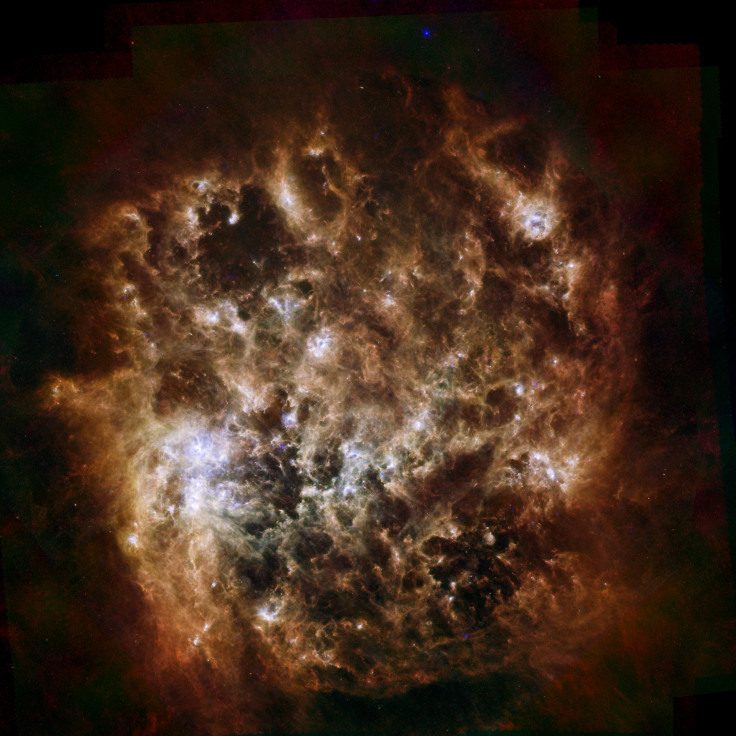Large Magellanic Cloud Forms A Heart Shape After Being Twisted and Tortured By Nearby Galaxies

A Large Magellanic Cloud (LMC) was recently found to have been a bolt spiral galaxy that is similar but smaller than our own Milky Way. This new discovery refutes the original theory of astronomers that this mixture of old and young stars lined up across the center is an irregular type of galaxy.
The Milky Way and the Small Magellanic Cloud (SMC) have exerted a significant gravitational pull and tidal force to the LMC, causing it to go out of shape. It has then been a twisted and torn galaxy.
The dark orange areas, as shown in the image, represent the patches of dust and the white and blue hues signifies that a furious star is being formed in this hot region where mighty winds are present due to the gas-heating capabilities of newborn stars. Finally, the green and deep red areas are the cold clouds that can form new stars if it disintegrates. All these changes interestingly form a heart shape, which is clearly depicted in the image above, taken through the infrared eyes of the ESA's Herschel, and NASA's Spritzer Space Telescopes.
The brightest area of this galaxy, as shown in the lower left of the photo, is actually a vast cloud made of of dust and hot gas. This huge cosmic spider is popularly known as the 30 Doradus, or "The Tarantula Nebula."
The size of the LMC is approximately 14,000 light years wide, and 10 billion times the mass of the sun. These numbers reckon that the LMC is one-one hundredth as vast as the Milky Way. The LMC can be located from the southern hemisphere as a dim cloud in the night sky, bestriding between the Dorado and Mensa constellations.
The LMC, which was named after explorer Ferdinand Magellan sighted in 1519, is the third-closest galaxy from the Milky Way with a distance of approximately 163,000 light years. The first and second closest galaxy to the Milky way are Canis Major Dwarf Galaxy (28,000 light years away), and the Sagittarius Dwarf Spheroidal Galaxy (65,000 light years away). The SMC was also named after Magellan.
To contact the writer, email rinadoctor00@gmail.com





















